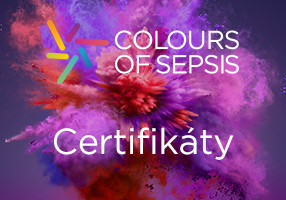Aktuality z Colours of Sepsis

SepsEast součástí 25. Colours of Sepsis!
6. 1. 2023
Vážení účastníci,
významnou odbornou událostí a vědeckým přínosem je zařazení bloku iniciativy SepsEast do programu 25. Colours of Sepsis. Tato iniciativa sbližuje a propojuje významné východoevropské osobnosti intenzivní medicíny s jejich západoevropskými kolegy za účelem sdílení nejnovějších poznatků a zkušeností v oboru a kvalitativního posunu intenzivní péče ve střední a východní Evropě. Po pravidelných setkáních v maďarské Budapešti se nyní schází několik důležitých členů této odborné komunity v Ostravě a nabízí všem účastníkům 25. Colours of Sepsis možnost poslechnout si přednášky na vybraná klíčová témata od špičkových evropských odborníků. Pro nás organizátory je to také další důkaz potvrzující význam naší akce a publika, pro které ji připravujeme.
Za přípravu bloku SepsEast děkujeme jednomu z klíčových členů této iniciativy – prof. MUDr. Janu Benešovi, Ph.D.
SepsEast
(Central and Eastern Europe Sepsis Forum)
Background
In 2012 a group of enthusiastic intensivists launched an initiative called SepsEast, to bring Eastern European opinion leaders and Western European experts together and also sharing up to date knowledge in the community. The idea was welcomed by several societies and conferences were organized regularly and biannually in Budapest, Hungary. The reason for starting this initiative in Central and Eastern Europe was the recognition of the importance of the shared legacy that we brought from the former Soviet-block, which lead to similar problems in each country. Namely, intensive care in this region of Europe became severely underfunded, understaffed with very poor research activity as compared to our Western counterparts. Things have improved over the last 10-15 years to some extent, but our research output is still decades behind the rest of the developed world. Furthermore, the very recent results of the SepsEast collaboration revealed that during the COVID-19 pandemic mortality on the intensive care units and especially of those receiving mechanical ventilation was substantially worse than that of published from Western Europe [Benes J et al, Sci Rep, 2022, https://doi.org/10.1038/s41598-022-18991-2]. Therefore, we believe that there is a need for formal collaboration in the future mainly in our scientific and training activities. To foster the recognition of our efforts and to produce tangible results we propose this Memorandum of Understanding between the Signatory Institutes for Academic Cooperation.
Mission of the SepsEast
Through education, training, clinical research, and communication the SepsEast network contributes to increased awareness, better understanding, advances in management and improved outcomes in sepsis accross central and eastern Europe.








